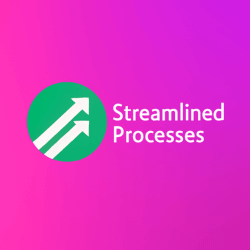For Automated Recurring Billing, see our main page here.
Understanding the Need for Automated Recurring Billing
Managing payments manually can be time-consuming and error-prone. For businesses offering subscriptions or installment-based services, this challenge only grows. That’s where Automated Recurring Billing becomes essential. It streamlines invoicing, improves payment consistency, and frees up time for your core operations.
Whether you run a SaaS platform, a gym membership, or a B2B service offering retainer contracts, implementing the right solution can significantly optimize cash flow and customer retention. In today’s digital marketplace, recurring billing isn’t just an advantage—it’s a necessity.
How Does Automated Recurring Billing Work?
Automated Recurring Billing is a system that charges customers at regular intervals without requiring manual input for each transaction. This is typically set up once during signup or checkout with customer consent. The billing platform securely stores payment details using tokenization or encryption, and then automates the collection process on predetermined dates.
To clarify, these systems often integrate with accounting tools, payment processors like Stripe or PayPal, and CRM platforms to ensure billing aligns with customer records and support requests. As a result, billing becomes a seamless part of your backend operations, improving both internal efficiency and customer experience.
Key Benefits of Automated Recurring Billing
- Improved Cash Flow: Regular billing cycles make revenue more predictable.
- Time Savings: Automation removes the need to create invoices or chase payments manually.
- Error Reduction: Fewer manual touchpoints means fewer mistakes in billing or collections.
- Customer Satisfaction: Clients appreciate convenience and consistent billing.
- Business Scalability: You can serve more customers without added billing workload.
For example, a digital marketing agency using Automated Recurring Billing reduced its late payments by 70% and spent 50% less time managing invoices.
Popular Use Cases for Recurring Billing Automation
Different industries have adopted recurring billing in ways tailored to their offerings. SaaS companies typically charge monthly or annually. On the other hand, wellness studios bill weekly memberships or class packages. Meanwhile, managed IT services offer monthly retainers that require minimal input post-setup.
Let’s look at a few examples:
- Online Learning Platforms: Subscription-based courses with monthly payments.
- Gyms: Members pay automatically every month for access and add-on services.
- Nonprofits: Regular donor contributions scheduled through billing automation.
Most importantly, the consistency in these models allows long-term planning and resource allocation.
Choosing the Right Automated Recurring Billing Software
The right software depends on your business model, customer base, and technical needs. Some tools specialize in simplicity while others offer deep integrations and customization.
Key factors to consider include:
- Integration Capabilities: Does it connect with your accounting, CRM, and payment gateway?
- Security Standards: PCI compliance and secure payment storage are non-negotiable.
- Flexibility: Can you offer discounts, trials, and custom billing cycles?
- Analytics: Reporting features help monitor revenue trends and churn.
- User Experience: Can customers manage their own billing settings?
To illustrate, a startup might use a basic Stripe integration, while an enterprise could need advanced features from platforms like Chargebee or Recurly.
Automated Recurring Billing Pitfalls to Avoid
While automation is powerful, poor setup can result in charge failures, customer frustration, or even legal issues. Therefore, it’s vital to test your system thoroughly, communicate billing terms clearly, and stay compliant with local and international regulations.
Common mistakes include failing to notify customers of upcoming charges, not updating expired cards, and poor retry logic for failed payments. Most providers offer dunning tools—automated follow-ups that help recover missed payments.
In addition, be transparent with cancellation policies and ensure customer service teams can quickly access billing history.
Best Practices for Implementation
To get the most out of Automated Recurring Billing, follow these actionable strategies:
- Use clear and consistent messaging during the signup process.
- Send automated reminders before renewals or trial expirations.
- Provide a self-service portal for billing updates and cancellations.
- Segment customers by billing plans for targeted communication.
- Review analytics regularly to adjust pricing or billing frequency.
Moreover, regularly revisiting your billing setup can surface improvement opportunities and drive higher retention.
Industry Trends Shaping Recurring Billing
Subscription-based models are exploding. According to a 2023 McKinsey report, subscriptions grew 4x faster than retail sales year-over-year. Consequently, more businesses are adopting Automated Recurring Billing systems to stay competitive.
Modern customers expect flexibility. This includes the ability to pause, change plans, or cancel at any time. Adaptive billing systems can cater to these demands while maintaining stability for the business. Also, AI is emerging as a tool to predict churn and optimize retry logic, helping increase lifetime customer value.
FAQ: Automated Recurring Billing Explained
- Q: Is Automated Recurring Billing secure?
A: Yes, most systems use advanced encryption and tokenization aligned with PCI DSS standards to protect customer data. - Q: What if a customer’s card expires?
A: Many systems offer automatic card updater features or send notifications to request updated payment details. - Q: Can I offer discounts or trials?
A: Absolutely. Most billing tools let you create promotional offers linked to specific plans or customer segments. - Q: Does recurring billing work globally?
A: In most cases, yes—though you’ll need to support multiple currencies and local tax rules depending on the software.
Final Thoughts on Subscription Billing
Automated Recurring Billing brings efficiency to any recurring revenue model. From robust support features to smooth customer experiences, it empowers business growth through process automation. Whether you’re scaling a SaaS, launching a membership, or streamlining services, the right setup can transform your revenue operations.
This article was created with the assistance of AI tools and reviewed by our team at Streamlined Processes LLC to ensure accuracy and relevance.
Follow us on Facebook here.

